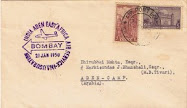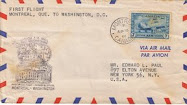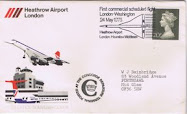Stamp issued by Germany in 1934 showing Count Ferdinand von Zeppelin and the LZ 127
David Schwarz & Count von Zeppelin shown on a Hungarian stamp issued in 1948
Count Ferdinand von Zeppelin, a retired German military officer, began experimenting with rigid airship designs in the 1890s. He invented a rigid framed dirigible or airship that became known as the Zeppelin. Count Zeppelin flew the world's first untethered rigid airship, the LZ-1, on July 2, 1900, near Lake Constance, or Boden See, between Germany & Switzerland, carrying five passengers.
First Zeppelin flight shown above a boat at Lake Constance
At its first trial the LZ1 carried five persons attaining an altitude of 400 metres (1,300 ft) and flew a distance of 6 kilometres (3.7 mi) in 18 minutes, but the wind then forced an emergency landing on the water.
After repairs the ship flew two more times showing its potential, beating the speed record then held by the French Army airship, La France, of 6 metres per second (22 km/h) by 3 metres per second (11 km/h), but this could not convince the possible investors. Because funding was exhausted, Graf von Zeppelin had to dismantle the prototype. However, he was soon working on the next model the more successful LZ2 (1906).
However, the flight of LZ1 signaled the beginning of the "Golden Age of Airships" and led to the most successful airships of all time: the Zeppelins. As is evident they were named after Count von Zeppelin. The story of the Zeppelins and other airships continues in the next post.
Luftschiffs (Airships) LZ1 & LZ3 shown on a Cuban souvenir sheet issued in 2000.













1 comment:
magyar posta stamp for sell.
http://shop.ebay.in/arunkumar033/m.html?_nkw=&_armrs=1&_from=&_ipg=25
Post a Comment